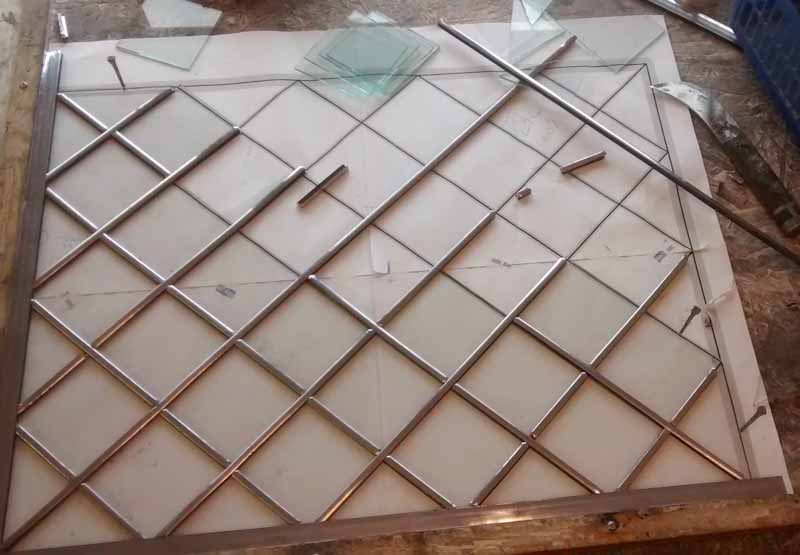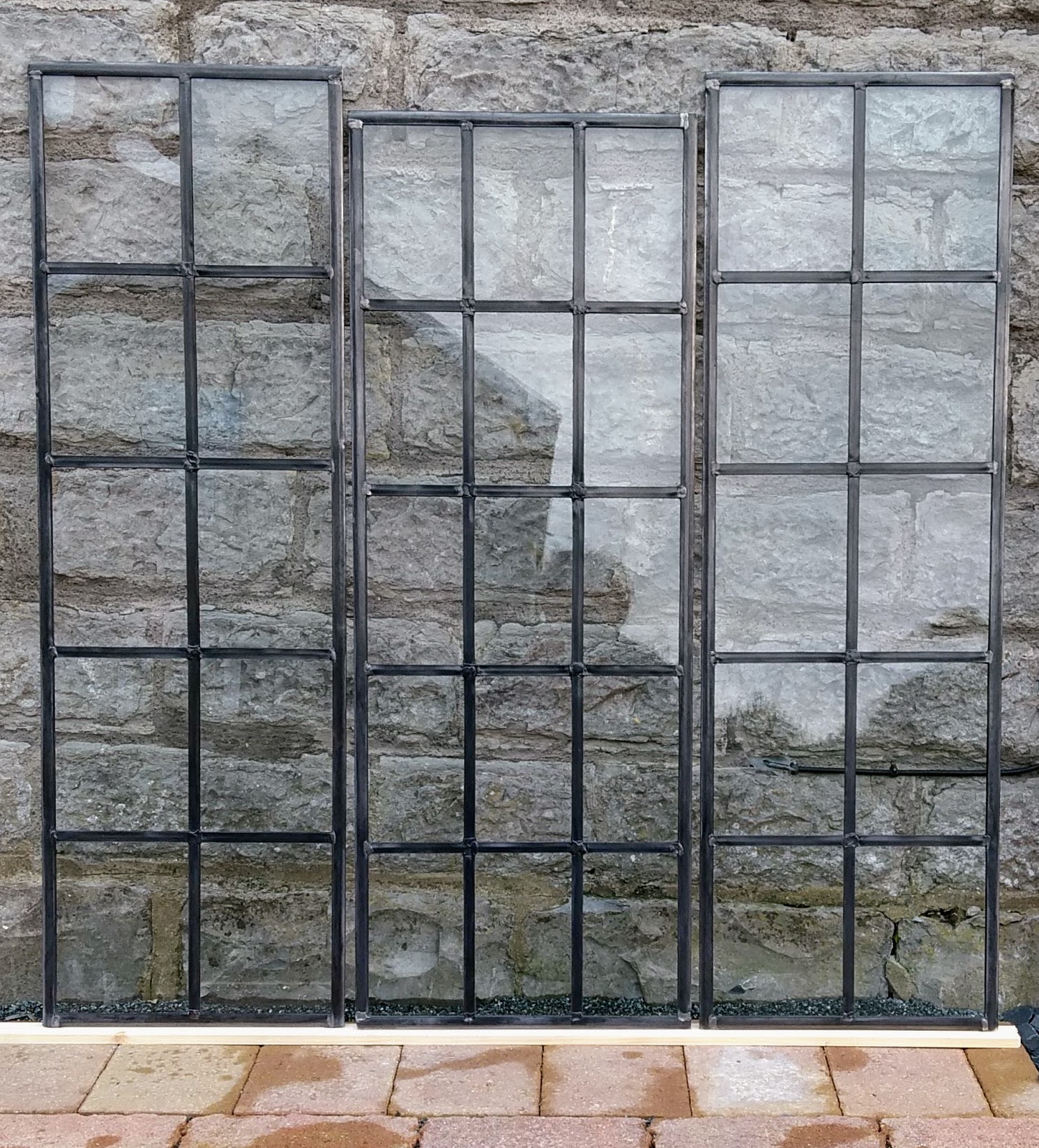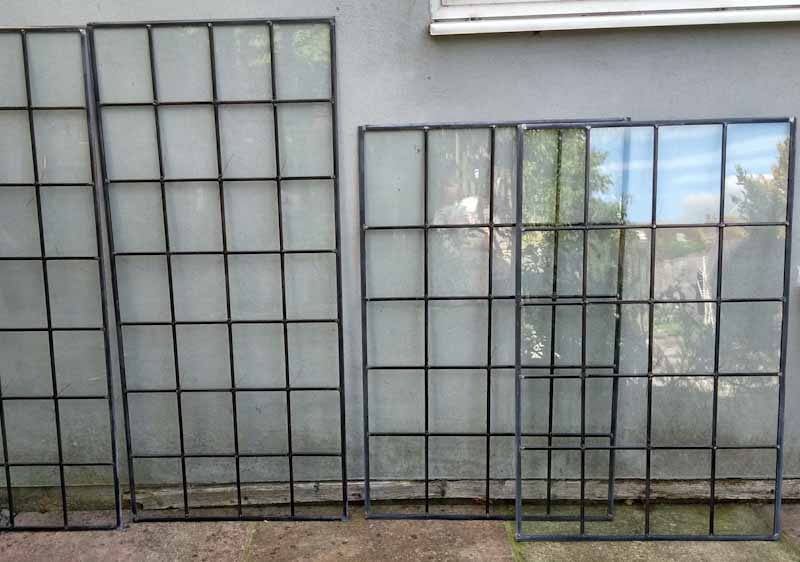We work with lead cames (or calms) and coloured glass, cut by hand to the design or pattern (the cartoon), fitted together (leaded up), the lead joints fluxed (with tallow) and soldered together, cemented in (with a special putty - the
cement) and finally polished. Although we generate our designs using a computer programme, a medieval glazier would recognise much of what we do!
We do not use self adhesive lead strips combined with coloured films or lacquers to create our work. These are non-traditional mass production type methods, often seen in double glazed windows and casements. They lack the visual impact of the
traditional techniques since they use a single pane of flat glass so much of the reflection and life of a proper traditional leaded panel is lost.
The medium of traditionally made stained glass provides a huge range of colour, texture, opacity and reflections depending on the glasses chosen. The opportunity to alter the matrix in which the glass is held can vary the boundaries with striking
effects.
It’s important that the arrangement of the lead is such that long runs in one piece are avoided since that may introduce a weakness, since strength is conferred by ensuring that there are a number of instances of cross leading - a bit like the
way courses of bricks are arranged in a wall. Narrow thin steel strips may be concealed within the lead, edgewise to the glass to add rigidity. External support bars are also commonly added, set into the frame and 'hiding' behind lead
lines. The panel is fixed to these bars with copper tie-wires.
Our leaded glass panels are used as regular glazing, often replacing plain glass in situation where originally there was stained glass and for hanging or standing in front of existing windows, including double glazed units. They are fully weather
proof, but can also be used in interior decoration.
We usually install the stained glass panels that we manufacture, but we can supply only. We have comprehensive fitting instructions available to our self-fit customers, but it’s not really a DIY job. Installation of leaded panels behind laminated
safety glass affords much greater security, since it is almost impossible to penetrate. It also provides protection to the leaded panel, particularly for busy households. If installed on the outside – providing maximum deterrent factor, the
outer sheet of glass means that the external appearance particularly in daylight is different to an unprotected panel due to reflections. The area of the frame immediately around the work on both sides will probably need repainting due to
the slight damage occurring as old glass is removed.


_edited.jpg)
